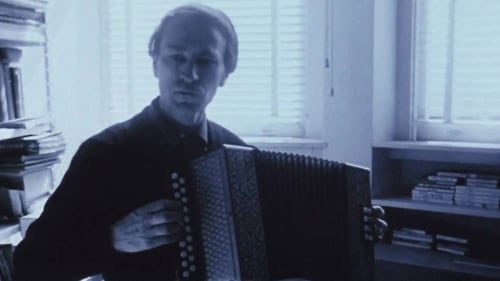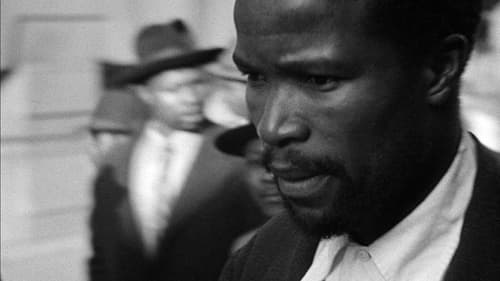Lionel Rogosin
Nascimento : 1924-01-23, New York City, New York, USA
Morte : 2000-12-08
História
Lionel Rogosin was an independent American filmmaker. Rogosin worked in political cinema, non-fiction partisan filmmaking and docufiction, influenced by Italian neorealism and Robert Flaherty.

Self
Interwoven with clips from the original film "Come Back Africa", the late Lionel Rogosin tells the story of how he penetrated Sophiatown, Johannesburg during the iron rule of the apartheid regime. In what develops like a political thriller, An American in Sophiatown is one of the most damning portrayals of this police state.

Self
A documentary overview and ideological critique of the South African film industry and cinema's historical relationship with apartheid.

N°124
Reel 13 of Gérard Courant's on-going Cinematon series.

Director
The tenth and final film directed by American independent filmmaker Lionel Rogosin. It is a filmed debate between the Palestinian poet Rashed Hussein and Amos Kenan, shot in the basement of Rogosin's Bleecker Street Cinema by Louis Brigante.

Director
The sixth and final feature-length film produced and directed by American independent filmmaker Lionel Rogosin. The film looks at workers who organize to resist exploitation by pulpwood corporations.

Director
The documentary looks at interracial marriage between black men and white women and the problems and issues associated with it. Featured are black civil-rights worker James Collier and his wife, a white woman.

Producer
Black Roots is the fourth feature-length film produced and directed by American independent filmmaker Lionel Rogosin. The film gathers a number of African American folk and blues musicians in a room, where they share stories and songs about the black experience in America.

Director
Black Roots is the fourth feature-length film produced and directed by American independent filmmaker Lionel Rogosin. The film gathers a number of African American folk and blues musicians in a room, where they share stories and songs about the black experience in America.

Self
An epic portrait of the New York avant-garde art scene of the 60s.

Director
Lionel Rogosin's plea for humanity and against war and fascism. For two years, Rogosin traveled to twelve countries to collect footage of war atrocities from their archives. He interspersed these harrowing images with scenes of a London cocktail party's mundane chatter. Good Times, Wonderful Times was released in 1964 at the height of the Vietnam War, and became one of the great anti-war films of the era.

Director
Oysters are in Season feautures the improvised humor of Swede Sorenson, Dean Preece and Molly Parkin as they play out sharply satiric situations. Utter foolishness abounds in short skits that range from an employment interview with an applicant whose previous experience has left him physically uncontrollable, and an unsuspecting golfer who arrives for a first lesson, to scenes of mayhem with a hammock and a chinese lantern masquerading as an artificial kidney.

Director
A clergyman seeks a donation from a banker in this short slapstick comedy.

Producer
Come Back, Africa chronicles the life of Zachariah, a black South African living under the rule of the harsh apartheid government in 1959.

Writer
Come Back, Africa chronicles the life of Zachariah, a black South African living under the rule of the harsh apartheid government in 1959.

Director
Come Back, Africa chronicles the life of Zachariah, a black South African living under the rule of the harsh apartheid government in 1959.

Writer
A mix of documentary and scripted footage on the Bowery, New York City's skid row. Against a backdrop of men (and a few women) drinking in bars, talking and arguing, and sleeping on sidewalks, we have the story of Ray.

Producer
A mix of documentary and scripted footage on the Bowery, New York City's skid row. Against a backdrop of men (and a few women) drinking in bars, talking and arguing, and sleeping on sidewalks, we have the story of Ray.

Director
A mix of documentary and scripted footage on the Bowery, New York City's skid row. Against a backdrop of men (and a few women) drinking in bars, talking and arguing, and sleeping on sidewalks, we have the story of Ray.

Director
Film on the refugee situation in Austria as a result of Hungarian Revolution of 1956.

Producer
A BAFTA award nominated documentary studying Hungarian refugee problems after the October 1956 revolution. Shot on the Austro-Hungarian frontier and in the refugee camp at Traiskirchen.




